
The City of Angels: Los Angeles, California
Explore Los Angeles: A vibrant city of sun, surf, and stars, offering a unique blend of culture, history, and entertainment that delights every visitor.
Los Angeles, often known as the City of Angels, is a sprawling metropolis located on the west coast of the United States. It is celebrated for its sunny weather, beautiful beaches, and vibrant cultural scene. As the entertainment capital of the world, Los Angeles is home to Hollywood, where the magic of movies is created and where you can take a stroll down the Walk of Fame to see the stars of your favorite celebrities. Whether you are a fan of art, history, or outdoor activities, Los Angeles offers a diverse range of attractions. Visit the Getty Center to admire its impressive art collection and enjoy panoramic views of the city. For a taste of history, explore the Los Angeles County Museum of Art (LACMA) or the Natural History Museum. If you love the outdoors, take a hike up to the Griffith Observatory for breathtaking views of the Hollywood Sign and the city below. The culinary scene in Los Angeles is just as diverse as its population. From food trucks offering tacos and Korean BBQ to upscale restaurants serving farm-to-table cuisine, there is something to satisfy every palate. Do not miss out on the vibrant nightlife, with its array of bars, clubs, and theaters offering live performances. Whether you're here for the glitz and glamour or the laid-back beach vibe, Los Angeles promises an unforgettable experience.
Local tips in Los Angeles
- Use public transportation like the Metro to avoid traffic and save on parking fees.
- Visit popular attractions early in the morning to avoid large crowds.
- Check out local farmers' markets for fresh produce and unique food items.
- Stay hydrated and wear sunscreen, especially if you plan to spend time outdoors.
- Explore different neighborhoods like Silver Lake, Venice, and West Hollywood for a variety of experiences.
Neighbourhoods in Los Angeles
The City of Angels: Los Angeles, California
Los Angeles, often known as the City of Angels, is a sprawling metropolis located on the west coast of the United States. It is celebrated for its sunny weather, beautiful beaches, and vibrant cultural scene. As the entertainment capital of the world, Los Angeles is home to Hollywood, where the magic of movies is created and where you can take a stroll down the Walk of Fame to see the stars of your favorite celebrities. Whether you are a fan of art, history, or outdoor activities, Los Angeles offers a diverse range of attractions. Visit the Getty Center to admire its impressive art collection and enjoy panoramic views of the city. For a taste of history, explore the Los Angeles County Museum of Art (LACMA) or the Natural History Museum. If you love the outdoors, take a hike up to the Griffith Observatory for breathtaking views of the Hollywood Sign and the city below. The culinary scene in Los Angeles is just as diverse as its population. From food trucks offering tacos and Korean BBQ to upscale restaurants serving farm-to-table cuisine, there is something to satisfy every palate. Do not miss out on the vibrant nightlife, with its array of bars, clubs, and theaters offering live performances. Whether you're here for the glitz and glamour or the laid-back beach vibe, Los Angeles promises an unforgettable experience.
When is the best time to go to Los Angeles?
Iconic landmarks you can’t miss
Universal Studios Hollywood
Discover the magic of movies at Universal Studios Hollywood, where thrilling rides and cinematic experiences come to life in a world of entertainment.

Santa Monica Pier
Discover the enchanting Santa Monica Pier, where history meets fun with attractions, stunning views, and vibrant coastal culture.

Griffith Park
Explore Griffith Park – a vast urban oasis in Los Angeles with stunning views, hiking trails, and cultural attractions like the Griffith Observatory and the LA Zoo.
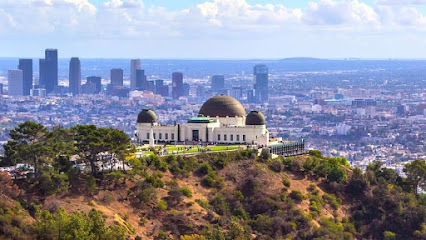
The Getty
Explore The Getty in Los Angeles, a stunning art museum showcasing European masterpieces and breathtaking gardens set against picturesque views.

Griffith Observatory
Discover the stars at Griffith Observatory, an iconic Los Angeles destination for science, astronomy, and stunning city views.

Venice Canals
Discover the serene beauty of the Venice Canals, a captivating historical landmark in California, perfect for leisurely strolls and picturesque views.

Hollywood Sign
Discover the Hollywood Sign, a historic landmark symbolizing the allure of Hollywood and a must-visit for tourists in Los Angeles.

Walt Disney Concert Hall
Explore the architectural brilliance of the Walt Disney Concert Hall, a premier venue for live music and performing arts in Los Angeles.

Hollywood Walk of Fame
Explore Hollywood's star-studded history at the Hollywood Walk of Fame, where entertainment legends are celebrated and memories are made.
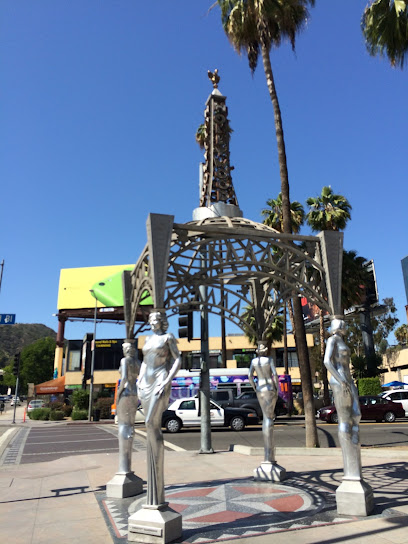
Los Angeles State Historic Park
Experience the serene beauty and cultural heritage of Los Angeles State Historic Park, a tranquil escape in downtown LA.

Angels Flight Railway
Discover the historic charm and breathtaking views at Angels Flight Railway, a must-visit attraction in Downtown Los Angeles for all tourists.

Bradbury Building
Discover the architectural marvel of the Bradbury Building in Los Angeles, a historic landmark showcasing stunning design and rich heritage.

Watts Towers Arts Center
Discover the iconic Watts Towers Arts Center, a cultural landmark in Los Angeles, showcasing extraordinary artistic creations and community spirit.

El Pueblo de Los Angeles Historical Monument
Explore the vibrant history and culture of Los Angeles at El Pueblo de Los Angeles Historical Monument, a hub of heritage and community.

Wisdom Tree
Discover the breathtaking views and serene hiking trails at Wisdom Tree in Hollywood Hills, a must-visit scenic spot for nature lovers.

Unmissable attractions to see
Universal Studios Hollywood
Discover the enchantment of Universal Studios Hollywood, where thrilling rides and Hollywood magic come together for an unforgettable experience.

Santa Monica Pier
Discover the iconic Santa Monica Pier, a historic landmark with thrilling rides, stunning views, and a vibrant atmosphere perfect for all travelers.

Disneyland Park
Discover the enchanting world of Disneyland Park in Anaheim, where every corner is filled with magic, adventure, and beloved Disney characters.

Griffith Park
Explore Griffith Park in Los Angeles: A paradise of nature, culture, and recreation awaits your discovery.

Universal CityWalk Hollywood
Experience the ultimate entertainment destination at Universal CityWalk Hollywood with shopping, dining, and vibrant nightlife in Los Angeles.

Knott's Berry Farm
Experience the thrill of rides, delightful dining, and engaging entertainment at Knott's Berry Farm in California, a top theme park destination.

Downtown Disney District
Discover the enchanting Downtown Disney District, where shopping, dining, and entertainment come together in a magical atmosphere near Disneyland.

The Getty
Explore The Getty in Los Angeles, a stunning art museum with breathtaking architecture, incredible gardens, and expansive art collections from around the world.

Crypto.com Arena
Experience the thrill of sports and concerts at Crypto.com Arena, Los Angeles' leading entertainment venue, and immerse yourself in the vibrant local culture.

Grand Central Market
Explore the vibrant flavors of Los Angeles at Grand Central Market, a historic food hall offering a diverse selection of local and international cuisines.

Aquarium of the Pacific
Discover the marvels of marine life at the Aquarium of the Pacific in Long Beach, California, where education meets entertainment in an unforgettable ocean experience.

Angel Stadium
Experience the thrill of baseball at Angel Stadium in Anaheim, California, a must-visit destination for sports enthusiasts and tourists alike.

Redondo Beach Pier
Experience the charm of Redondo Beach Pier, where stunning ocean views, fresh seafood, and vibrant culture come together for an unforgettable coastal adventure.

The Queen Mary
Experience the grandeur of The Queen Mary in Long Beach, where history, luxury, and the allure of the sea converge.
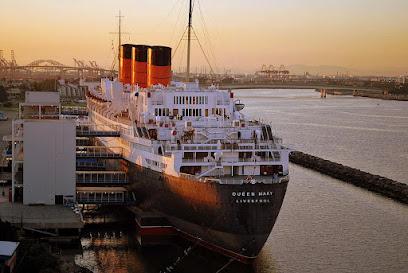
Los Angeles County Museum of Art
Explore the Los Angeles County Museum of Art, a cultural haven featuring diverse art collections and captivating exhibitions in the heart of LA.

Essential places to dine
République Café Bakery & République Restaurant
Discover the perfect blend of French elegance and New American flair at République Café Bakery & Restaurant in Los Angeles.

Bottega Louie
Experience the rich flavors of Italy at Bottega Louie in Downtown LA—an exquisite destination for breakfast, brunch, and fine dining.

Perch
Experience exquisite French cuisine and stunning city views at Perch, LA's premier rooftop dining destination.

Bestia
Experience authentic Italian cuisine at Bestia in Los Angeles' Fashion District – where tradition meets innovation.
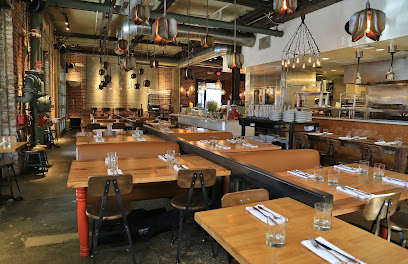
Home Restaurant
Experience unique American grill flavors at Home Restaurant in Los Feliz - where every dish tells a delicious story.

Tam O'Shanter
Discover the rich flavors of Scotland at Tam O'Shanter – where fine dining meets warm hospitality in Los Angeles.
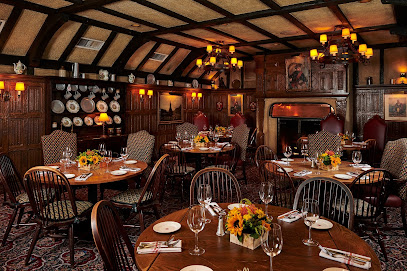
Maccheroni Republic
Discover the heart of Italy in Los Angeles at Maccheroni Republic - where fresh pasta and authentic flavors come alive.

71Above
Experience upscale dining at 71Above with breathtaking views of Los Angeles' skyline and exquisite seasonal cuisine.
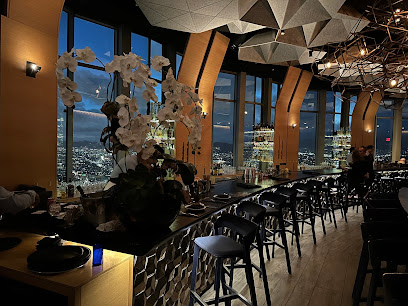
Beetle House LA
Discover Beetle House LA: A Tim Burton-themed grill and bar offering enchanting food and drinks in a whimsical atmosphere.

Water Grill
Discover Water Grill: An upscale seafood restaurant in Los Angeles offering fresh catches and exquisite flavors in an elegant setting.

The Proud Bird | Los Angeles
Explore The Proud Bird in Los Angeles - where culinary delights meet aviation history in an unforgettable dining experience.

Otium
Discover Otium in Downtown LA - where contemporary American cuisine meets artistic elegance for an unforgettable fine dining experience.
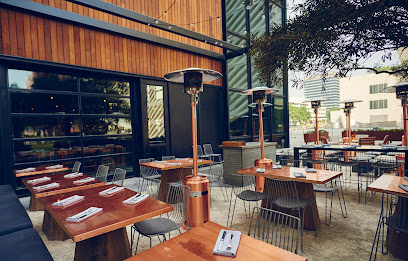
Redbird
Discover Redbird: An exceptional New American dining experience in Downtown LA featuring seasonal flavors and an inviting atmosphere.

Girl & the Goat Los Angeles
Experience innovative New American cuisine at Girl & the Goat in LA's Arts District - where bold flavors meet artistic flair.

BADMAASH Downtown LA
Experience the vibrant fusion of Indian cuisine and American flavors at Badmaash Downtown LA – where tradition meets innovation.

Markets, malls and hidden boutiques
The Grove
Discover The Grove, a premier shopping destination in Los Angeles, blending luxurious retail, delightful dining, and vibrant entertainment for unforgettable experiences.

La La Land
Discover unique Hollywood souvenirs at La La Land, where the magic of cinema meets unforgettable shopping in the heart of Tinseltown.

Soap Plant / Wacko
Explore Soap Plant / Wacko, an exceptional gift shop in Los Angeles filled with unique treasures and quirky finds that celebrate creativity.

The Hollywoodland Experience
Explore the magic of Hollywood at The Hollywoodland Experience, where you can find unique souvenirs that celebrate Tinseltown's cinematic legacy.

Lemon Frog Shop Vintage Bazaar (California Certified Green Business)
Explore the eclectic charm of Lemon Frog Shop Vintage Bazaar in Echo Park, your destination for unique vintage clothing and sustainable fashion finds.
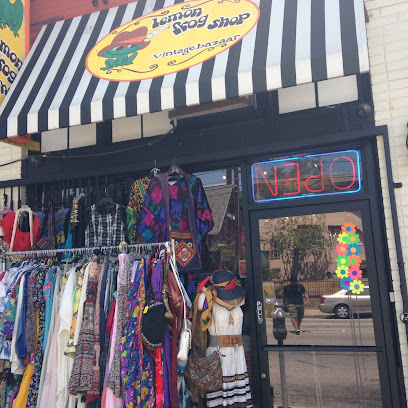
Souvenir Outlet
Explore the Souvenir Outlet in Hollywood for a variety of unique gifts and iconic memorabilia that capture the essence of Los Angeles.
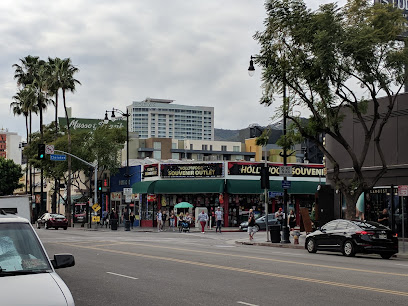
The Library Store
Explore The Library Store in Los Angeles for unique gifts and books that celebrate literature and creativity in a charming atmosphere.

Black Market
Explore Black Market in Sawtelle, Los Angeles—a unique gift shop offering eclectic finds and trendy clothing for every taste.

Space City Vintage
Explore a unique blend of vintage clothing, leather goods, records, and tattoo artistry at Space City Vintage in Little Tokyo, Los Angeles.

Just One Eye
Discover the eclectic charm of Just One Eye, a unique boutique in Hollywood offering fashion, art, and home goods for the discerning shopper.

The Way We Wore
Discover vintage treasures and unique women's fashion at The Way We Wore, a must-visit vintage clothing store in Hancock Park, Los Angeles.

Memento Mori Los Angeles
Discover unique gifts that embody the spirit of Los Angeles at Memento Mori, your go-to shop for eclectic treasures in Hollywood.

Quirk
Explore Quirk, a vintage clothing store in Los Angeles, where unique fashion meets custom tailoring and timeless style.

Pygmy Hippo Shoppe
Explore the whimsical Pygmy Hippo Shoppe in Los Angeles, offering unique gifts, home decor, and delightful souvenirs in a charming setting.
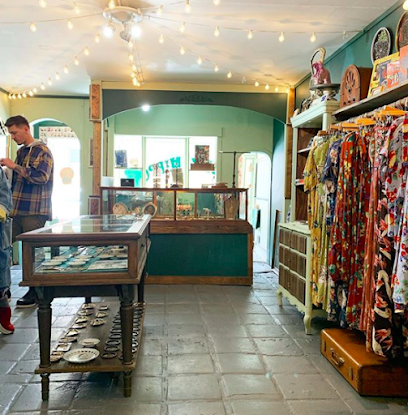
Arcade Vintage
Arcade Vintage: Your ultimate destination for unique, retro fashion treasures in Los Angeles' Fashion District.

Essential bars & hidden hideouts
Good Times at Davey Wayne's
Experience the vibrant retro charm of Good Times at Davey Wayne's, where creative cocktails and a lively atmosphere await in Hollywood.

Everson Royce Bar
Experience the vibrant nightlife at Everson Royce Bar in Los Angeles' Fashion District, where creative cocktails meet an electric atmosphere.

Library Bar
Experience the chic ambiance of Library Bar in Los Angeles, where unique drinks and delightful dining converge in a stylish lounge setting.

Lock & Key
Discover Lock & Key in Koreatown, a lively cocktail bar and gastropub offering a unique speakeasy experience with live music and delicious cuisine.

No Vacancy
Discover No Vacancy, a hidden bar in Hollywood offering vintage charm, craft cocktails, and a lively atmosphere for an unforgettable night out.

Wolf & Crane Bar
Experience the vibrant cocktail culture at Wolf & Crane Bar in Little Tokyo, where traditional Japanese flavors meet modern mixology.

The Varnish
Discover The Varnish, a cocktail bar in Los Angeles blending classic drinks, live music, and a vintage ambiance for an unforgettable night out.
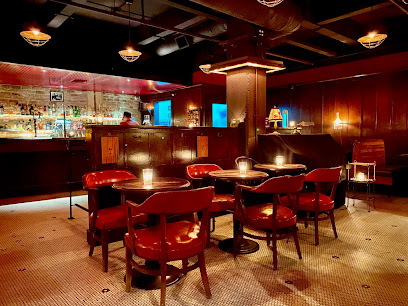
Pattern Bar
Pattern Bar in Los Angeles: A trendy bar and restaurant that serves delicious breakfast, signature cocktails, and vibrant nightlife in a chic setting.

Death & Co Los Angeles
Discover innovative cocktails and a vibrant atmosphere at Death & Co Los Angeles, a must-visit cocktail bar in the Arts District.

The Roger Room
Discover The Roger Room in Beverly Grove: A chic bar renowned for artisanal cocktails and a vibrant nightlife experience.

Bigfoot Lodge
Experience the rustic charm and creative cocktails at Bigfoot Lodge, a cozy bar in Atwater Village, Los Angeles.

Lost Property Bar
Discover Lost Property Bar in Hollywood, where innovative cocktails meet live music in an enchanting atmosphere.

The Mermaid
Discover The Mermaid, a lively cocktail bar in Little Tokyo, offering innovative drinks and a vibrant atmosphere for an unforgettable night out.
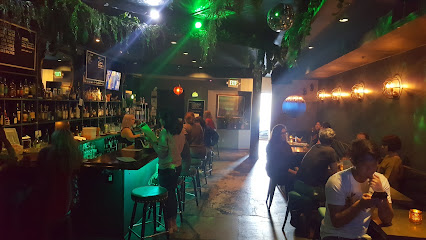
Gold Line
Discover the lively Gold Line Bar in Highland Park, Los Angeles, where great drinks, music, and vibrant atmosphere await you.

The Slipper Clutch
Experience the vibrant live music scene at The Slipper Clutch, a unique bar in the Historic Core of Los Angeles, perfect for music lovers and night owls.

Local Phrases
-
- HelloHey
[hey] - GoodbyeLater
[ley-ter] - YesYeah
[yeh] - NoNah
[nah] - Please/You're welcomePlease/No problem
[pleez/no pro-blem] - Thank youThanks
[thaynks] - Excuse me/SorryExcuse me/My bad
[ex-kyooz mee/my bad] - How are you?What's good?
[wuts good?] - Fine. And you?I'm chill. You?
[aim chil. yoo?] - Do you speak English?You speak English?
[yoo speek ing-glish?] - I don't understandI don't get it
[ai dohnt get it]
- HelloHey
-
- I'd like to see the menu, pleaseCan I check out the menu?
[kan ai chek out the men-yoo?] - I don't eat meatI'm vegetarian
[aim ve-ji-tear-ee-an] - Cheers!Cheers!
[cheers!] - I would like to pay, pleaseI'll take the check, please
[ail tayk the chek, pleez]
- I'd like to see the menu, pleaseCan I check out the menu?
-
- Help!Help!
[help!] - Go away!Beat it!
[beet it!] - Call the Police!Call the cops!
[kawl the cops!] - Call a doctor!Get a doc!
[get a doc!] - I'm lostI'm lost
[aim lost] - I'm illI'm sick
[aim sik]
- Help!Help!
-
- I'd like to buy...I wanna cop...
[ai wana kop...] - I'm just lookingJust browsing
[just brouw-zing] - How much is it?How much?
[how much?] - That's too expensiveThat's pricey
[thats prye-see] - Can you lower the price?Can you hook it up?
[kan yoo hook it up?]
- I'd like to buy...I wanna cop...
-
- What time is it?What time is it?
[wut taym iz it?] - It's one o'clockIt's one
[its wun] - Half past (10)Ten-thirty
[ten-thur-tee] - MorningMorning
[morn-ing] - AfternoonAfternoon
[af-ter-noon] - EveningEvening
[ee-ven-ing] - YesterdayYesterday
[yess-ter-day] - TodayToday
[toh-day] - TomorrowTomorrow
[toh-mor-row] - 1One
[wun] - 2Two
[too] - 3Three
[three] - 4Four
[for] - 5Five
[fayv] - 6Six
[siks] - 7Seven
[sev-en] - 8Eight
[ayt] - 9Nine
[nine] - 10Ten
[ten]
- What time is it?What time is it?
-
- Where's a/the...?Where's the...?
[wares the...?] - What's the address?What's the addy?
[whats the ad-dee?] - Can you show me (on the map)?Can you show me (on the map)?
[kan yoo show mee (on the map)?] - When's the next (bus)?When's the next (bus)?
[whens the next (bus)?] - A ticket (to ....)A ticket (to ....)
[a ticket (to ....)]
- Where's a/the...?Where's the...?
History of Los Angeles
-
Los Angeles was founded on September 4, 1781, by a group of 44 settlers known as 'Los Pobladores.' This group consisted of individuals of diverse backgrounds, including Native Americans, Africans, and Europeans. The settlement was originally named 'El Pueblo de Nuestra Señora la Reina de los Ángeles de Porciúncula,' which translates to 'The Town of Our Lady the Queen of the Angels of Porciúncula.'
-
In 1821, Mexico gained independence from Spain, and Los Angeles became part of the Mexican territory. During this period, the Rancho system flourished, with vast tracts of land being granted to individuals, resulting in the establishment of large cattle ranches. This era significantly shaped the cultural and social landscape of the region.
-
Los Angeles became part of the United States in 1848 following the Treaty of Guadalupe Hidalgo, which ended the Mexican-American War. The discovery of gold in California in 1848 also played a crucial role in the city's growth, attracting thousands of settlers and prospectors to the area.
-
The arrival of the Southern Pacific Railroad in 1876 and the Santa Fe Railroad in 1885 transformed Los Angeles into a major transportation hub. This development spurred economic growth, population increase, and the expansion of the city’s industries, including agriculture and oil.
-
The early 20th century saw the rise of Hollywood as the epicenter of the American film industry. Pioneering filmmakers were drawn to Los Angeles for its diverse landscapes and favorable climate. By the 1920s, Hollywood had become synonymous with the burgeoning motion picture industry, propelling Los Angeles to international fame.
-
The Great Depression of the 1930s brought economic challenges to Los Angeles, but the city rebounded during World War II. The war effort led to an industrial boom, particularly in aerospace and manufacturing, drawing a large workforce and contributing to the city’s rapid expansion.
-
Los Angeles played a significant role in the Civil Rights Movement of the 1960s. The city was the site of important events, including the Watts Riots of 1965, which highlighted issues of racial inequality and social justice. These events were pivotal in shaping the city's ongoing efforts toward civil rights and community activism.
-
The 1984 Summer Olympics, hosted by Los Angeles, marked a significant event in the city's modern history. The games were a financial success and showcased Los Angeles to the world, leading to increased international recognition and economic benefits for the region.
-
In 1992, the acquittal of four LAPD officers in the beating of Rodney King, an African American motorist, sparked widespread riots in Los Angeles. The civil unrest highlighted deep-seated issues of racial tension, police brutality, and economic disparity, prompting calls for significant reforms in law enforcement and community relations.
-
Today, Los Angeles is a vibrant, multicultural metropolis known for its diverse population, thriving arts scene, and innovative industries. The city continues to evolve, influenced by its rich history and cultural heritage, making it a dynamic destination for travelers and residents alike.
Los Angeles Essentials
-
Los Angeles is served by several major airports, with Los Angeles International Airport (LAX) being the largest and most commonly used by international and domestic travelers. Other airports include Bob Hope Airport (BUR) in Burbank, Long Beach Airport (LGB), and John Wayne Airport (SNA) in Orange County. LAX is approximately 18 miles from downtown Los Angeles, and several transportation options are available, including taxis, ride-sharing services, shuttle buses, and car rentals.
-
Los Angeles has a variety of transportation options to help you navigate the sprawling city. The Los Angeles Metro system includes buses and rail lines that cover many parts of the city and surrounding areas. Taxis and ride-sharing services like Uber and Lyft are widely available. Renting a car is also a popular option, but be prepared for heavy traffic, especially during rush hours. Biking is becoming more common, and bike-sharing programs are available in certain areas. Walking is practical in neighborhoods like downtown, Hollywood, and Santa Monica, but less so for longer distances.
-
The official currency in Los Angeles is the United States Dollar (USD). Credit and debit cards are widely accepted in most businesses, including restaurants, shops, and hotels. ATMs are plentiful throughout the city, and many accept international cards. Mobile payment options like Apple Pay and Google Wallet are also commonly used. It's a good idea to carry some cash, especially for small purchases or in areas where card acceptance may be less common, such as local markets.
-
Los Angeles is generally a safe city for tourists, but like any large city, it has areas with higher crime rates. Exercise caution in neighborhoods like Skid Row, South Central, and parts of East Los Angeles, especially after dark. Keep an eye on your belongings in crowded areas and avoid displaying valuables openly. Stick to well-lit and populated areas, and use reputable transportation options. If you're unsure about the safety of a particular area, consult your hotel staff or a local.
-
In case of an emergency, dial 911 for immediate assistance, including police, fire, and medical services. Los Angeles has numerous hospitals and urgent care centers throughout the city. It is advisable to have travel insurance that covers medical emergencies. For minor health concerns, pharmacies are widely available and can provide over-the-counter medications. Keep a list of emergency contacts and the address of your accommodation handy at all times.
-
Fashion: Do dress comfortably and in layers, as temperatures can vary throughout the day. Casual attire is generally acceptable in most settings. Avoid overly revealing clothing when visiting religious sites. Religion: Do respect all religious practices and spaces. If visiting a place of worship, dress modestly and follow any posted guidelines. Public Transport: Do use a TAP card for convenient payment on the Metro system. Don't eat or drink on public transport. Greetings: Do greet people with a friendly 'hello' or 'hi'. Handshakes are common in professional settings, while casual greetings are more relaxed. Eating & Drinking: Do try a variety of cuisines, as Los Angeles is known for its diverse food scene. Don’t forget to tip, typically 15-20% in restaurants.
-
To experience Los Angeles like a local, explore neighborhoods beyond the typical tourist spots. Visit farmers' markets like the Hollywood Farmers' Market or the Original Farmers Market at The Grove. Enjoy outdoor activities such as hiking in Griffith Park or Runyon Canyon. Take advantage of the city's vibrant arts scene by visiting galleries in Downtown LA's Arts District. For a unique experience, attend a live taping of a TV show. Use apps like Yelp and Eater LA to find the best local eateries and hidden gems.
Trending Landmark in Los Angeles
-
Universal Studios Hollywood
-
Santa Monica Pier
-
Griffith Park
-
The Getty
-
Griffith Observatory
-
Venice Canals
-
Hollywood Sign
-
Walt Disney Concert Hall
-
Hollywood Walk of Fame
-
Los Angeles State Historic Park
-
Angels Flight Railway
-
Bradbury Building
-
Watts Towers Arts Center
-
El Pueblo de Los Angeles Historical Monument
-
Wisdom Tree
Nearby Cities to Los Angeles
-
Things To Do in Hollywood
-
Things To Do in Glendale
-
Things To Do in Monterey Park
-
Things To Do in Pasadena
-
Things To Do in Inglewood
-
Things To Do in Burbank
-
Things To Do in Venice Beach
-
Things To Do in Santa Monica
-
Things To Do in Long Beach
-
Things To Do in Anaheim
-
Things To Do in Malibu
-
Things To Do in Santa Clarita
-
Things To Do in Huntington Beach
-
Things To Do in Costa Mesa
-
Things To Do in Irvine




















